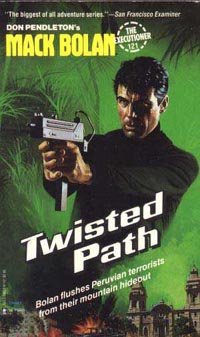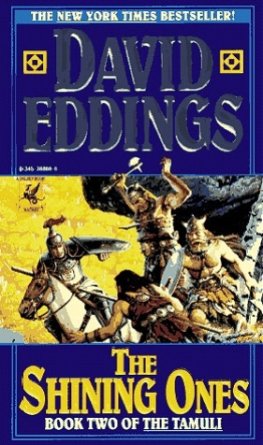The Shining Path
A Book in the Series
Latin America in Translation/en Traduccin/em Traduo
Sponsored by the DukeUniversity of North Carolina Joint Program in Latin American Studies
1999 The University of North Carolina Press
All rights reserved
Originally published in Spanish with the title
Sendero: Historia de la guerra milenaria en el Per
(Lima: Editorial Apoyo, 1990).
Manufactured in the United States of America
Translation of the books in the series Latin America in
Translation / en Traduccin / em Traduo, a collaboration
between the DukeUniversity of North Carolina Joint Program
in Latin American Studies and the university presses of Duke
and the University of North Carolina, is supported by a
grant from the Andrew W. Mellon Foundation.
The paper in this book meets the guidelines for permanence
and durability of the Committee on Production Guidelines for
Book Longevity of the Council on Library Resources.
Library of Congress Cataloging-in-Publication Data
Gorriti Ellenbogen, Gustavo.
[Sendero. English]
The Shining Path : a history of the millenarian war in Peru/Gustavo Gorriti ; translated, with an introduction, by Robin Kirk.
p. cm.(Latin America in translation/en traduccin/em traduo)
Includes bibliographical references and index.
ISBN -13: 978-0-8078-2373-6 (cloth : alk. paper)
ISBN -10: 0-8078-2373-2 (cloth : alk. paper)
ISBN -13: 978-0-8078-4676-6 (pbk. : alk. paper)
ISBN -10: 0-8078-4676-7 (pbk. : alk. paper)
1. Sendero Luminoso (Guerrilla group) 2. PeruPolitics and government19681980. 3. PeruPolitics and government1980 4. GuerrillasPeru. I. Title. II. Series.
F3448.2.G67 1999 98-4360
322.50985dc21 CIP
10 09 08 07 06 7 6 5 4 3
Ayacucho seems more closely tied to death than life.... It has always been a place of battle and death. Revolutions begin in Arequipaan old Peruvian saying goesbut when they reach Ayacucho they are serious matters.
CARLETON BEALS
Fire in the Andes, 1934
But in contemplating history as the slaughter-bench at which the happiness of peoples, the wisdom of states, and the virtue of individuals have been sacrificed, a question necessarily arises: To what principle, to what final purpose, have these monstrous sacrifices been offered?
G. W. F. HEGEL
Reason in History
Contents
Introduction
More than one friend who has visited Peru recently has commented on the changes since Gustavo Gorriti first saw The Shining Path in print in 1990. Where once alarm and anxiety reigned, foreign graduate students now eagerly conduct interviews. U.S. chicken chains no longer report bomb attacks. Computers and cell phones and pagers and photocopiers beep and buzz and rattle on limitless current. The financiers who once shunned the former Inca Empire now see gold, literally, in its gorges and riverbeds and figuratively in its unwhitened, unbrightened, unaccessorized, and undeodorized populace.
Underneath this skin of giddy globality, though, has everything really changed? To be sure, Abimael Guzmn, the Shining Path leader and a vivid and unsettling presence in these pages, broods on a prison island off Lima. What remains of his army is in a jungle redoubt, capable no longer of remaking society, only killing its weakest sporadically. Many of the villages they and the army razed have reemerged from the rubble. The Shining Path never seized power; a Nisei agronomist named Alberto Fujimori did, and in 1992 filled the vacuum guerrillas labored so hard to create.
Yet the poverty, corruption, and institutional rivalries described in The Shining Path continue, as well as those remarkable and rare examples of quiet proficiency and wisdom that Gorriti took such pains to identify for this book. Although Peru, at its worst, tests the limits of what humankind can endure, it also proves, again and again, that once those limits are passed, the story continues, made up in equal parts of character, chance, and odds few in the First World are ever obliged to face.
Some of the more memorable individuals Gorriti describes are the police and State Security officials called on to detect and dismantle the incipient insurgency. Among them is Eduardo Ipinze, whom Gorriti describes as a Latin Elliot Ness, who, at the outset, appeared to be the incarnation of the ideal of the modern, honest, and efficient policeman that the country needed. Appearance was deceptive, as was so often the case in the period covered by The Shining Path, essentially 1979 to Christmas 1982. Ipinze had been corrupted by the largest narcotics ring ever organized in Peru. As damaging to his country, however, was Ipinzes dedication, as head of the Investigative Police, to annihilating his institutional rivals, not guerrillas.
In contrast, Jos Mara de la Jara, the first interior minister under Perus reestablished democracy and called Bonbon for his rotund figure, took seriously his role as defender of society and tried, despite fierce opposition from within his own political party, to defuse the ticking bomb of rebellion. More than any interior minister who followed, De la Jara managed to slow the Shining Path. Significantly, his methods were not repression and brutality, but a tenacious support for democracy and the law, feared by guerrillas as well as De la Jaras enemies within the security forces. But the Bonbon failed. When he resigned, Gorriti writes, any attempt for a democratic reform of the mechanisms of state security ended.
But the man who dominates this book, inescapably, is Guzmn. Perhaps Gorritis most notable achievement is to have so accurately and richly described the fugitive Shining Path leader without ever having met or even glimpsed him. Through a close analysis of Guzmns writings, interviews with those who knew this philosophy professor as a member of the San Cristbal de Huamanga National University faculty, and Shining Path documents and government intelligence analyses, Gorriti draws a full and convincing portrait, no less frightening for being taken essentially from meticulous research, never personal contact.
Gorriti introduces us to Guzmn in the first pages of the book, writing of the professors brief arrest during a general strike in 1979. But he waits until the chapter called Mohammed, Mao, Macbeth to evoke the Guzmn that dominates the rest of The Shining Path. To do it, he depends on the guerrilla leaders first and perhaps only true love: the political writings that were the bedrock of Shining Path military strategy. Gorritis use of these documents is brilliant. To those of us who, like me, are bored quickly with the jargon and historical murk of Communist theory building, these tracts can seem as dry and dusty as an Ayacucho plain. But Gorriti not only places them firmly and convincingly in their Communist and military context, but draws out the human passions at work within the Shining Path and Peru at the moment they were being written and debated.
These passions were not, as Gorriti underscores, merely the result of growing pains and the predictable rivalries of any political machine built on the far margin of real power, although these forces were certainly present. Beneath the veneer of pseudoscientific certainty lies a deep faith and a palpable hatred. Guzmns task, at the very outset of rebellion, was to stiffen the resolve of his followers to embark upon destruction. Some among them, writes Gorriti, had already been figuratively beheaded... (but the) realization that the actions they were about to take would irrevocably seal their future acted as a powerful stimulus to uncertainty. Much had already happened. Old friendships and long-standing camaraderies had been undone; homes and any hope for a normal life had been abandoned. Nevertheless, all of this journey had only reached the beginning that they now faced. For the Shining Path, this was the meeting on Rooster Island.






![Communist Party of PeruCommunist Party of Peru - Shining - The Collected Works of the Communist Party of Peru. 1968-1999 [Warning: Hate Speech and Negationism]](/uploads/posts/book/267146/thumbs/communist-party-of-perucommunist-party-of-peru.jpg)